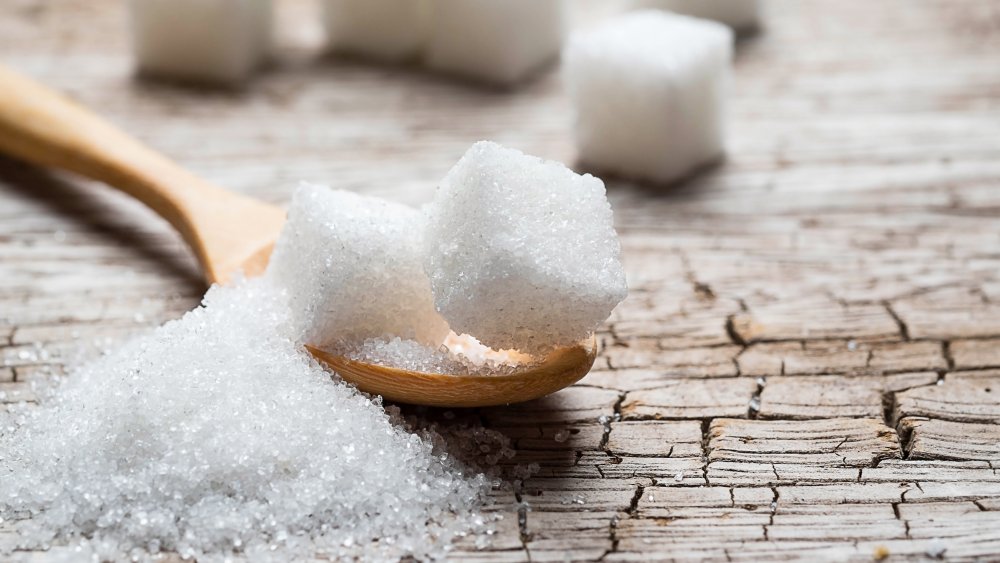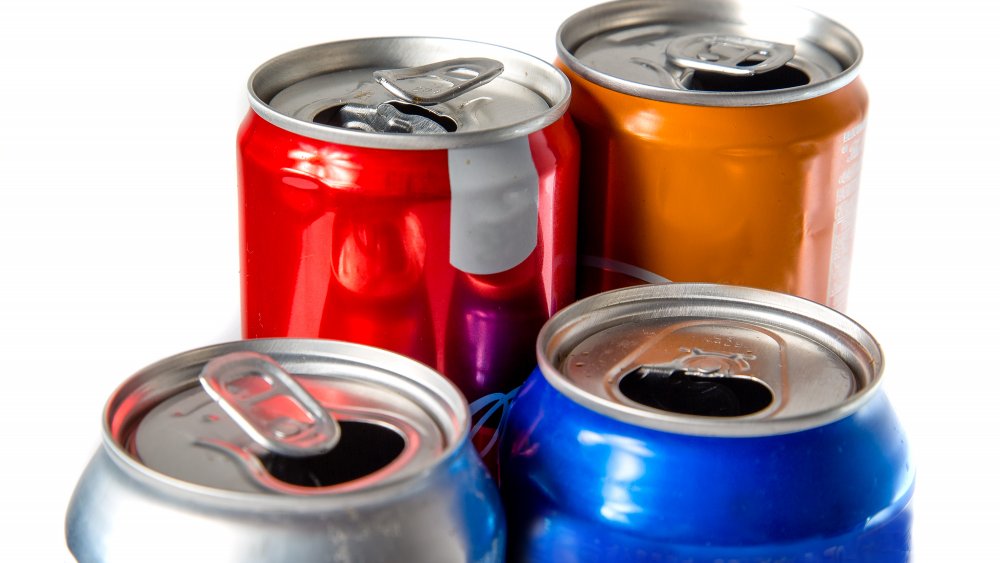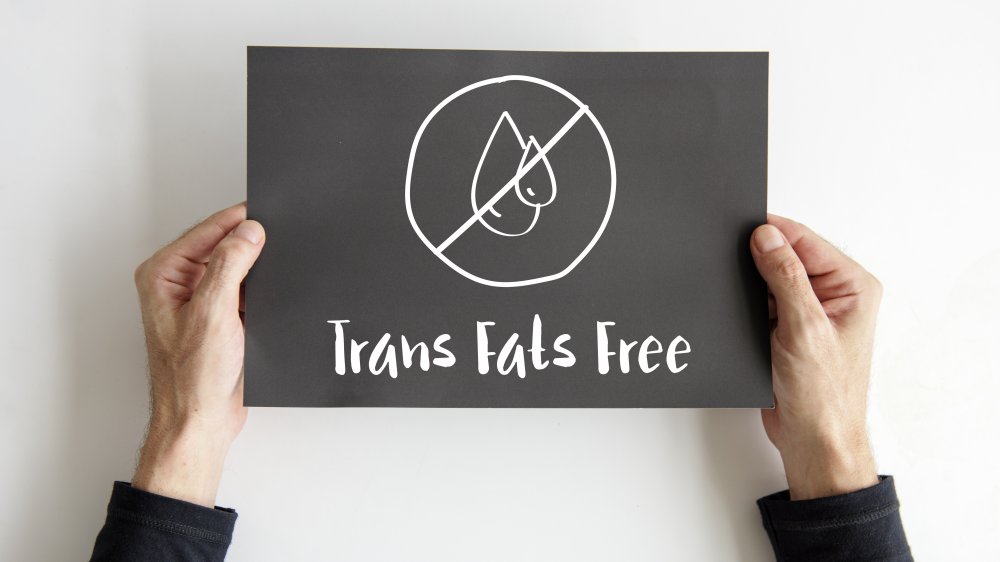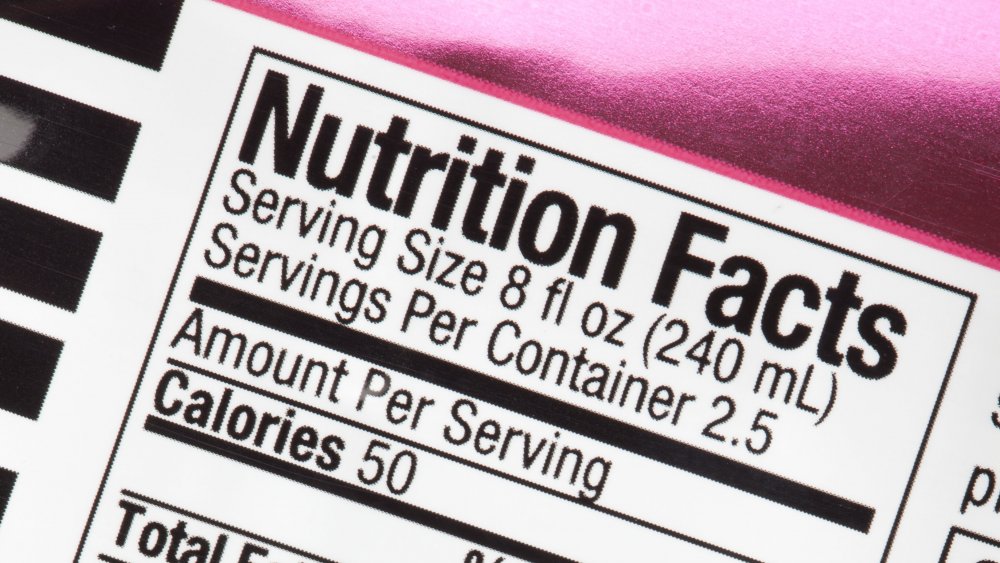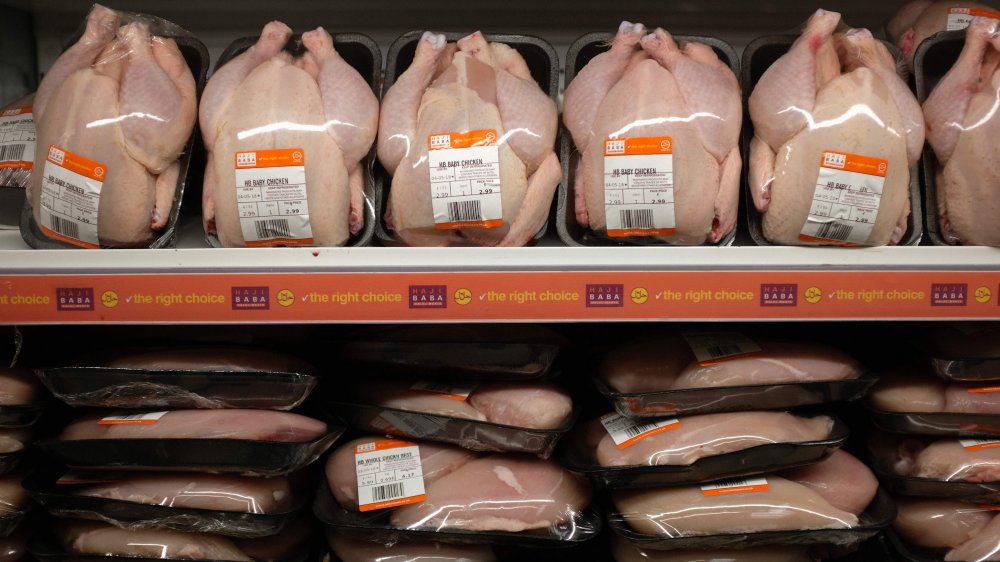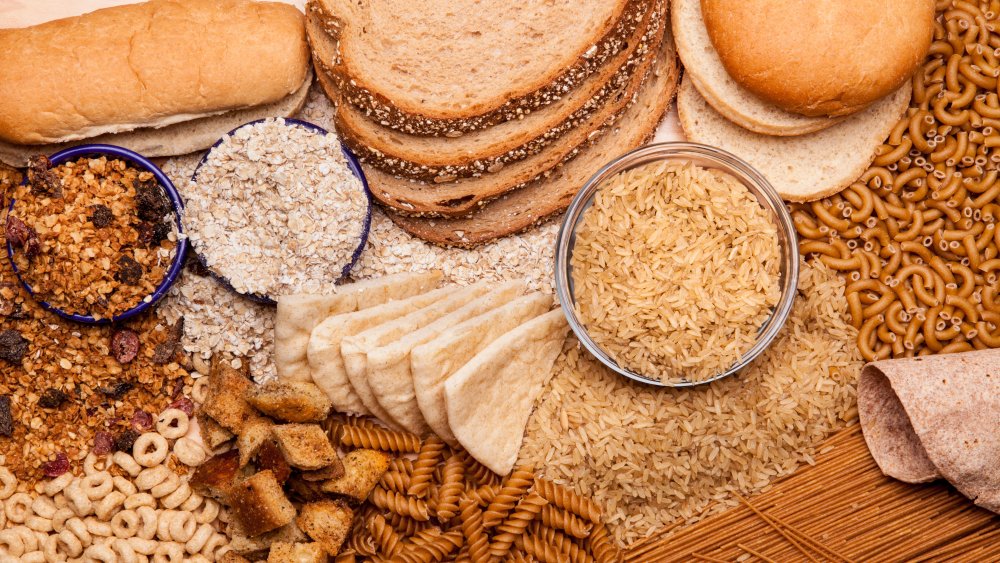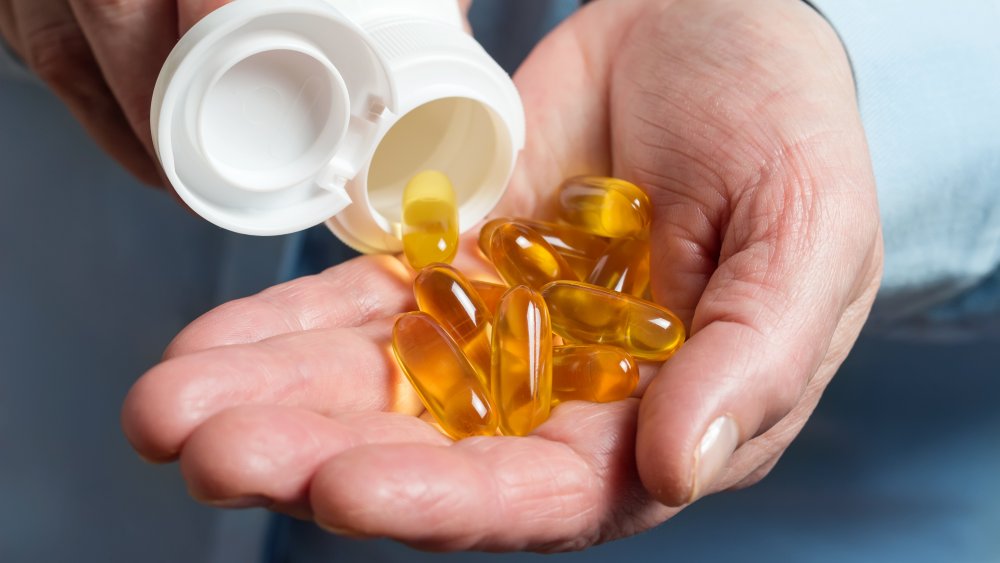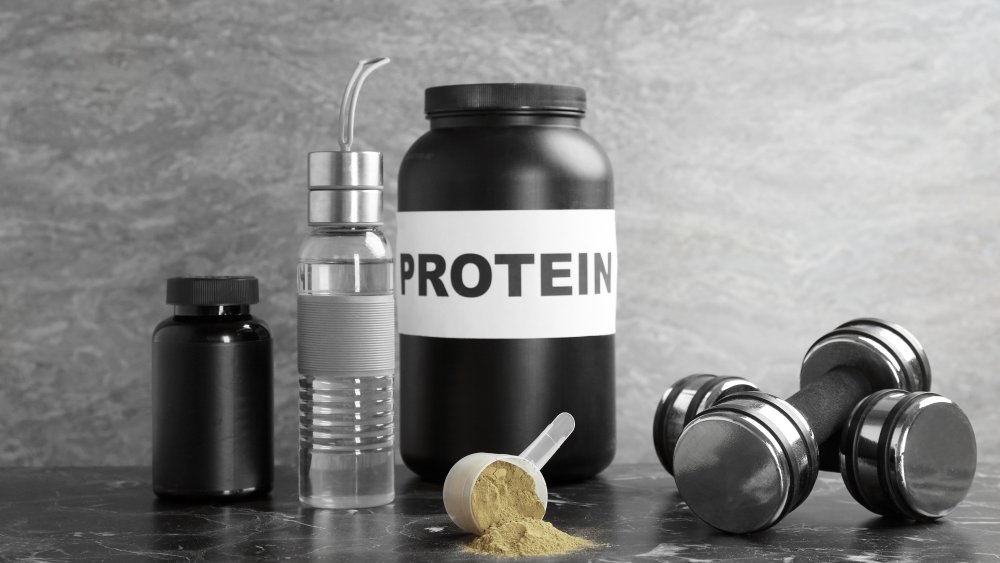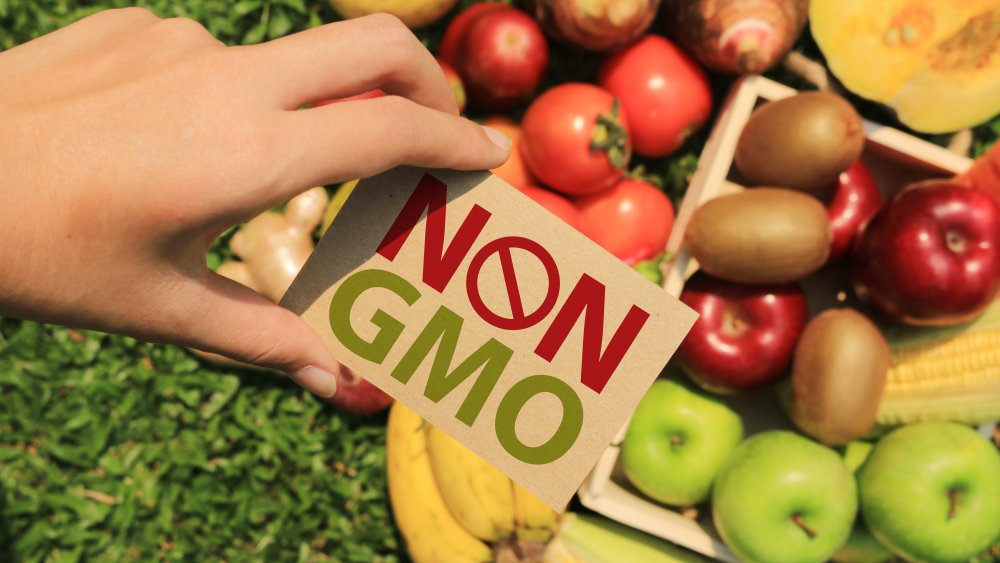The Biggest Lies Food Manufacturers Told Us This Past Decade
In this day and age, you would think it'd be hard for food manufacturers to lie to people. After all, the United States Food and Drug Administration (FDA) has stringent rules for food labeling that require all kinds of disclosures.
Packaged foods contain the nutrition information about each product, and there's a long list of (sometimes unpronounceable) ingredients on every box. And yet, it turns out that companies have found all kinds of ways to skirt the line, marketing their products in creative ways.
The best way to keep from being duped by food manufacturers is to avoid the processed and packaged food section. While there are a few whole foods that made it on this list — including chicken and beef — most of the lies food manufacturers told us this past decade have come from junky snacks and processed food.
But, if you do decide to shop in the center of the grocery store where these products live, it's time to start taking a close look at those nutrition labels and watch out for the things we're about to discuss. These are the biggest lies food manufacturers told us this past decade.
Products that are low-sugar or with no-added-sugars are better for you
The war on sugar is very real. In the last decade, we've seen several cities adopt additional taxes on sugar-sweetened sodas in the hopes that sugar consumption will go down. That doesn't mean that soda has sole blame for America's sugar habit, though. Harvard Health identified a number of other sources for added sugar in our diets, including candy, cookies, fruit drinks, milk products like yogurt, and sugary grains (we're looking at you, cereal). Consumers who want to cut down on their sugar intake are looking to products like no-sugar-added granola bars and fruit drinks at the grocery store, but we found out this decade that these items aren't everything they promise.
Many of these so-called healthy foods might contain more sugar than you'd think, including the ones specifically labeled as having no added sugars. The American Health Association (AHA) revealed that a "sugar-free" label could have as much as 0.5 grams of sugar, and "no added sugar" or "without added sugar" labels just mean additional sugar or sugar-containing ingredients weren't added during processing. That doesn't mean they can't use ingredients that contain natural sugars, like fruit.
A 2015 study also found that most consumers think products with the word "fruit" are healthier, but products that use fruit sugar, fructose sweetener, fruit juice concentrates, or concentrated fruit juice are just as sugary as ones that use added sugars.
Low-calorie foods are a healthier option
According to a study by the U.S. Dietary Guidelines, Americans eat more calories than our bodies need, mostly in the form of added sugar and saturated fats. So it's only natural that a society that overeats would look to low-calorie foods as a healthier option. There are plenty of low-calorie foods you can eat without gaining weight, but they don't come processed in a box or package at the grocery store. Instead, people reach for 100-calorie snack packs or grab a low-calorie diet soda — and despite what food manufacturers have led us to believe, they are not a healthier option.
Just as Americans got fatter during the low-fat craze of the 1990s, recent studies are revealing that processed and packaged low-calorie food might actually be dangerous for our health.
Many of these products (notably diet sodas) contain artificial sweeteners that don't contribute calories to food or drinks. Sadly, not contributing calories doesn't mean that these ingredients are healthy for our bodies. A 2017 study published in the Canadian Medical Association Journal found that regular intake of non-nutritive sweeteners (like stevia, aspartame, or sucralose) could actually increase weigh gain, leading to obesity and disease like hypertension and type 2 diabetes.
Organic food contains all organic ingredients
If you take a lap around the grocery store these days, you'll find the shelves packed with "organic" and "non-GMO" labels, but those foods might not be what you thought.
Food Business News reports that organic food sales are on the rise, increasing 5.9 percent in 2018 to reach $47.9 billion (according to the 2019 Organic Industry Survey by the Organic Trade Association). Consumers are craving cleaner, healthier foods, so it's only natural that food processors would respond to the trend. It's not just meat and produce, either; you'll find everything from organic bread to gummy bears at the grocery store.
The major problem here is that most people don't really understand what organic food means. The word "organic" is regulated by the United States Department of Agriculture (USDA), and manufacturers must be certified organic to make claims on their label. That doesn't mean that the entire product they sell is organic, though. Unless the food is labeled as "100% organic," it's definitely not. The USDA's labeling standards state that the word "organic" can be used so long as 95 percent or more of the ingredients are organic. Even worse, foods labeled as "made with organic ingredients" might be made of only 70 percent organic ingredients.
Organic food is healthier
We've learned the importance of actually reading the label to make sure our product is truly organic, but is it actually true that organic food is healthier? People are buying more and more organic food because it's generally raised without chemical pesticides, herbicides, antibiotics, or growth hormones. But does any of that actually mean it's inherently healthier? This past decade, we learned that it's usually not.
A 2012 Stanford study compared convention and organic foods to see if they could point to a marker that made it healthier. They did find that consumption of organic foods could reduce the risk of pesticide exposure, but they couldn't find any strong evidence that the organic foods are more nutritious. The only nutrient that seemed to be higher in organic food was phosphorus. Since most people don't have a phosphorus deficiency, the team considered this to be of little significance.
The study's team leader still pointed to "plenty of other reasons" to buy organic, including flavor, environmental impacts, and animal welfare. But, keep in mind that ingredients like organic sugar are as unhealthy as conventional sugar — they're just raised without the use of chemical pesticides.
Trans-fat-free means zero trans fat
Although doctors no longer believe that all fat is bad for our bodies, the American Heart Association (AMA) still recommends reducing or removing foods that contain trans fat. Consuming this type of fat is believed to increase bad (LDL) cholesterol and may increase the risk of developing heart disease. Some meat and dairy products contain naturally occurring trans fats, but the AMA recommends avoiding artificial trans fats found in deep-frying oils and other "partially hydrogenated oils."
Products that say "trans-fat-free" on the label should be safe to eat then, right? According to a 2010 study by Kansas State University, it's not as simple as that. Even the presence of a small amount of trans fat could cause people to exceed the recommended minimum consumption. That's because the Food and Drug Administration allows products to be labeled as "trans-fat-free" if they contain less than 0.5 grams. Consume a few servings of a product like that, and you might accidentally exceed the AMA's recommended 2-gram limit.
Best to peek at the nutrition label on trans-fat-free foods; if you see the word "hydrogenated," the product has some trans fat and you're being fooled.
"Personal size" food and beverages items only have one serving per package
The next time you grab a granola bar or small bottle of soda, take a peek at the nutrition label. You might be surprised at how few calories the product contains... until you take a closer look, that is. That tiny little granola bar probably claims it has two servings, which doubles the calorie count if you eat it in one sitting. And the soda: A 20-ounce bottle might claim it has 2.5 servings, really amping up the amount of sugar you're drinking if you gulp it all down in one go.
In 2012, Men's Health (via NBC News) went grocery shopping and found some egregious rip-offs in the serving size department. A microwaveable soup that's clearly designed for one lists two serving sizes, and Pop-Tarts (wrapped up two to a package) claim that one tart makes up an entire serving.
Things got even worse when they look at grocery store items from PF Changs and Boston Market; their nutrition information didn't look too bad, until you discovered that each boxed meal is intended to feed two people.
Be careful out there, people; the serving size scams are all around us.
"Natural" foods are wholesome
As we become more and more health-conscious consumers, food manufacturers have started to adapt. They've adjusted their labels, and you'll find the words "gluten-free" on a bottle of olive oil or "natural" on a bottle of juice. Many of these labeling terms are regulated by U.S. Food and Drug Administration (FDA) and can only be used under specific circumstances.
Unfortunately, the word "natural" is not yet regulated. Although Bon Appetit reports that the FDA is close to defining "natural," it's currently unregulated, making it basically a marketing term. Consumers are taking it seriously enough to take offense, though. Since 2015, there have been 300 lawsuits over the use of the word "natural" on packaging (according to CBS News).
When it comes to poultry, egg, and meat labeling, which is regulated by the United States Department of Agriculture (USDA), there is a definition for the word "natural." But Consumer Reports dubbed it as the "most misleading [chicken] label" in 2013. It only means the chicken contains no artificial ingredients, added colors, and it is " only minimally processed." That doesn't mean it's not receiving antibiotics or consuming GMO feed, and it certainly doesn't mean that the chickens have access to roam.
Food is healthy because it contains whole grains
Despite the attack against gluten, carbs, and grains restricted by paleo or keto diets, studies are showing that whole grains are healthy. Consumption of these grains is associated with a lower risk of cardiovascular disease and type 2 diabetes. It's not surprising that the word "whole grains" is showing up on more and more processed foods, but it might shock you to learn that the U.S. government has very few regulations on using the term — and that the label doesn't necessarily mean it's healthy.
The Whole Grains Council reports that products can be labeled as "whole grain" if they contain 51 percent whole grain. That means that 49 percent of the product could be refined grains, which could be misleading consumers.
A 2011 study showed that parents thought that cereal labeled as "whole grain" was healthier than the alternative. In reality, these cereals may have an unhealthy level of sugar and sodium, even though they contain heart-healthy whole grains.
Research has also shown that whole grains ground into fine flours can spike blood sugar just as fast as refined grains, making them significantly less healthy than intact whole grains.
Omega-3 supplements are a magic solution
The idea that certain fats might be beneficial for our health goes back to the 1930s, when a husband-and-wife team discovered that "essential fatty acids" are critical for our health. These are now known as omega-3 fatty acids, and since then we've learned that we must consume them through food — they can't be made by our body.
Some of these fats come from fish, while others (known as alpha-linolenic acid) can be found in nuts, flaxseed, leafy greens, vegetable oils, leafy greens, and the fat from grass-fed animals. But not everyone wants to eat these types of foods, so the supplements market has provided an answer.
Harvard Health reports that 10 percent of American adults take an omega-3 supplement. Food manufacturers are also fortifying foods like juice, salad dressing, baked goods, and cereal with omega-3 fatty acids. Unfortunately, a 2018 study revealed that omega-3 supplements are not as effective as we thought at preventing the risk of heart problems.
Another 2018 study called VITAL also examined the benefits of omega-3 supplements on heart health. While they did find taking the supplements reduced the risk of heart attack by 28 percent of adults considered at risk for heart disease, they didn't find any omega-3 benefits for stroke or other cardiovascular events not related to heart disease, meaning that omega-3 supplements aren't the magical solution we thought they were.
Grass-fed beef eats grass its entire life
There are a lot of labels on meat products these days. You'll find words like antibiotic-free, hormone-free, organic, natural, free-range, cage-free, and grass-fed on everything from eggs to chicken and beef. These products are often more expensive than their unlabeled competition — especially in the case of grass-fed beef.
Some people have no problem paying more for grass-fed beef because it's higher in nutrients and omega-3 fatty acids (according to Healthline). It's also supposed to be better for the cow. Most grain-finished beef is raised in concentrated animal feeding operations (CAFOs) with confined stalls and limited space. They're also often given antibiotics and hormones to maximize growth, so switching to grass-fed beef is touted as a better option.
The only problem is the United States Department of Agriculture (USDA) doesn't really regulate this term. In 2016, the Agricultural Marketing Service, the marketing branch of the USDA, dropped the official definition of "grass-fed." The previous definition required that grass-fed beef be fed only grass and forage with "continuous access to pasture during the growing season." It also strictly prohibited feeding the animals grain or grain by-products.
Now that the definition is no longer enforced, the term is more open to interpretation by manufacturers. Some beef is finished on grain at the very end but still labeled as grass-fed, so it's best to look for grass-finished beef to be sure of what you're getting.
Protein-rich foods are good for you
There are a lot of compelling reasons to eat more protein. It's an essential building block for our muscles, and studies have shown that high-protein foods are more filling. That means you can eat less food but feel just as full, leading to weight loss. There are plenty of protein-rich foods that are naturally high in this macronutrient, like meat, fish, or eggs. There are also several plant-based proteins, like almonds, oats, broccoli, soy, or quinoa.
If you're looking to the inner aisles of the grocery store to make sure you're getting enough protein, you may be looking in the wrong place. Sure, there are a lot of processed foods that contain plenty of protein, and you could grab a granola bar or a protein shake to get there — but those options might not be as healthy as manufacturers want you to believe. In fact, a 2018 study from the Clean Label Project warns against foods that don't contain natural sources of protein.
Processed foods contain concentrated protein powders from whey or soy, but protein isn't the only thing in these supplements. After testing 130 popular protein supplements, researchers found that about 75 percent of the powders had detectable levels of cadmium and lead (which can cause kidney and brain damage) and half the powders contained detectable levels of BPA, which is linked to numerous health issues.
Non-GMO food has zero genetic modifications
Here's the thing about genetically modified foods (GMO): they're all around us. Over the years, the foods we eat have evolved, and some of them look totally different than their ancient ancestors. Apples used to be small and tart, but we've cross-bred them to be large, sweet, and juicy. And yet, these apples can be certified non-GMO. Then there's something called mutation breeding, where scientists select a plant's best traits and use gamma radiation to speed up the process of spontaneous genetic mutation. Scientists have been doing this since the 1930s, but this process also isn't considered GMO (according to Forbes).
So it seems that only certain modification processes are called out as GMO. According to the Non-GMO project, a GMO is an organism (plant, animal, or other) whose "genetic makeup has been modified in a laboratory using genetic engineering or transgenic technology." Any other type of modification is normal enough to allow a non-GMO label. Not only that, but the Wall Street Journal points out that of the 55,000 non-GMO project labeled foods in the grocery store, many of them couldn't possibly contain GMOs. There are no GMO tomatoes or oranges, so classifying them as non-GMO is a marketing term that doesn't really mean anything.

